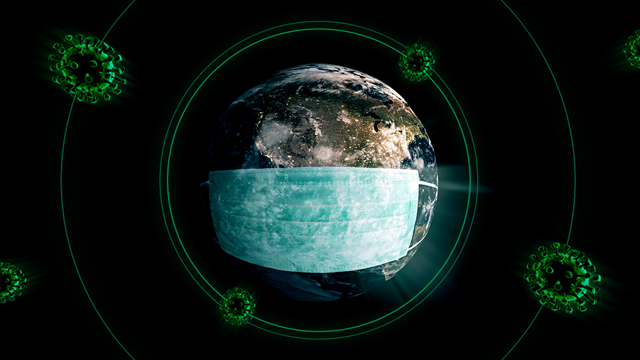

Lately, as a result of this COVID-19 pandemic, lots of people are saying that we should stop eating wildlife. That we must stop disturbing forests, and the like. Well, it is not that easy. All our environmental problems are practically driven by population pressure. As our population grows, we will need to provide the basic resources for every additional individual to grow, survive, and hopefully become an active participant in our society.
Note that it took more than 200,000 years for us humans to reach 1 billion, but it only took 200 years for us to reach 7 billion. In the Philippines, to date, our population is about 108-109 million, when about 35 years ago, our population was just 54 million. Thus, with this current population growth rate, our doubling time is about 35 years. It is predicted that the Philippine population might be 200 million by 2050. (Wow! I hope you are very worried, just like me!)
This growing population drives the need to convert already depleted and degraded ecosystems, such as forests and the like for agricultural lands, and lakes and other similar bodies of water for aquaculture, resulting in biodiversity loss. The rationale for conversion has been on the need for food and timber supplies, and areas for residential and industrial expansions. The consensus is clear though that agriculture has been the primary driver of biodiversity loss (e.g. conversion of land, degradation of land, etc). (READ: Renewable energy, sustainability keys for future)
Biodiversity in danger
The sad reality is that we rely on this biodiversity for the stability of our biosphere. Ecosystems (e.g. forests, lakes, rivers, seagrasses, coral reefs, etc.) are the fundamental units to sustaining our biosphere, as they are capable of being a source and sink of energy and the recycling of nutrients, allowing life to thrive and persist, including us. For instance, there is no industrial factory that can similarly produce the amount of oxygen and take up carbon dioxide on the levels of accumulated plant photosynthesis and respiration. This is true in every spatial scale: local, regional, and global. This is probably one of the most undermined natural processes that is often lost in the discussion of the ecosystem’s services (and accounting/valuation). (READ: The weight of all life on Earth)
I would like to toss here the hard questions of how we will continue to feed the growing number of human population. How are we going to continue to provide food for more Filipinos, and land area for growing subdivisions and industries, without compromising further our already depleted natural ecosystems? I cannot imagine that every Filipino family will have a detached house and lot. Are we just going to expand and disregard the rampant conversion of our ecosystems?
One of the most undermined ecosystems is the wetlands (e.g. Candaba swamps in Central Luzon). There are not many natural wetlands left as they are often converted into farmlands and reclaimed for residential purposes or industries. We did this so extensively for our tropical rainforests and mangroves as well.
A call to action
So when will we say that enough is enough? This is beyond a climate crisis. I would rather call it an environmental crisis. These are seriously hard questions to ask! I know that there have been a few exceptional successful environmental programs (e.g. rehabilitation, conservation, etc.), but as a scientist, I would prefer that we do not just talk about exceptional cases, but rather see that the protection and proper management of these ecosystems become the norm.
Now, let us go back to the COVID-19 pandemic. Please note that microbes (including bacteria and viruses) have been in our planet for 3.5 billion years. Therefore, it is not hard to imagine that they are all over the place. We have been dealing with quite a few new or novel strains this century: African swine fever, Ebola, E. coli, foot-and-mouth disease, hepatitis, Nipah virus, Listeria, Q fever, salmonella, vibrio, Yersinia, Zika, H1N1, etc. The obscure or new ones may be found in extreme environments and sometimes pristine ecosystems. So, as we continue to exploit natural resources and convert land and coastal areas, we will always have this probability that these pathogenic microorganisms (those that can cause diseases) will emerge or re-emerge. (READ: Why climate change is one of the biggest health threats of the 21st century)
So, my call to action is for a moratorium. A global one! But I truly hope that the Philippines would heed it. That is, we should now stop destroying natural ecosystems (e.g. lowland and upland forests, wetlands, rivers, lakes, mangroves, seagrasses, coral reefs). Enough is enough! This moratorium would allow us to put a halt to land conversion, as well as coastal degradation, and review the current status of these ecosystems relative to societal trends and plans. We should focus on improving the development and institutionalization of the local government units' supposed Comprehensive Land Use Plans (including coastal areas). We should maximize the seemingly extensive tracks of lands, often privately owned, and maybe promote public-private partnership instead of converting the remaining natural habitats again. Note that if poverty persists and the conversion of ecosystems continues, pathogens will always have a venue to move from one host or one environment to the next. – Rappler.com
Lemnuel Aragones, PhD, is a professor and Director of the Institute of Environmental Science and Meteorology (IESM) at the College of Science, University of the Philippines-Diliman. Email: laragones@iesm.upd.edu.ph